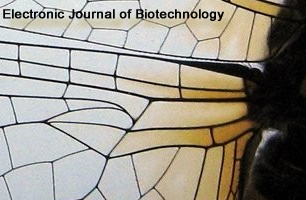Abstract
Xylella fastidiosa inhabits the plant xylem, a nutrient-poor environment, so that mechanisms to sense and respond to adverse environmental conditions are extremely important for bacterial survival in the plant host. Although the complete genome sequences of different Xylella strains have been determined, little is known about stress responses and gene regulation in these organisms. In this work, a DNA microarray was constructed containing 2,600 ORFs identified in the genome sequencing project of Xylella fastidiosa 9a5c strain, and used to check global gene expression differences in the bacteria when it is infecting a symptomatic and a tolerant citrus tree. Different patterns of expression were found in each variety, suggesting that bacteria are responding differentially according to each plant xylem environment. The global gene expression profile was determined and several genes related to bacterial survival in stressed conditions were found to be differentially expressed between varieties, suggesting the involvement of different strategies for adaptation to the environment. The expression pattern of some genes related to the heat shock response, toxin and detoxification processes, adaptation to atypical conditions, repair systems as well as some regulatory genes are discussed in this paper. DNA microarray proved to be a powerful technique for global transcriptome analyses. This is one of the first studies of Xylella fastidiosa gene expression in vivo which helped to increase insight into stress responses and possible bacterial survival mechanisms in the nutrient-poor environment of xylem vessels.
Upon acceptance of an article by the journal, authors will be asked to transfer the copyright to Electronic Journal of Biotechnology, which is committed to maintain the electronic access to the journal and to administer a policy of fair control and ensure the widest possible dissemination of the information. The author can use the article for academic purposes, stating clearly the following: "Published in Electronic Journal of Biotechnology at DOI:10.2225/volXX-issueX-fulltext-XX".
The Copyright Transfer Agreement must be submitted as a signed scanned copy to biotec@ucv.cl. All authors must send a copy of this document.
